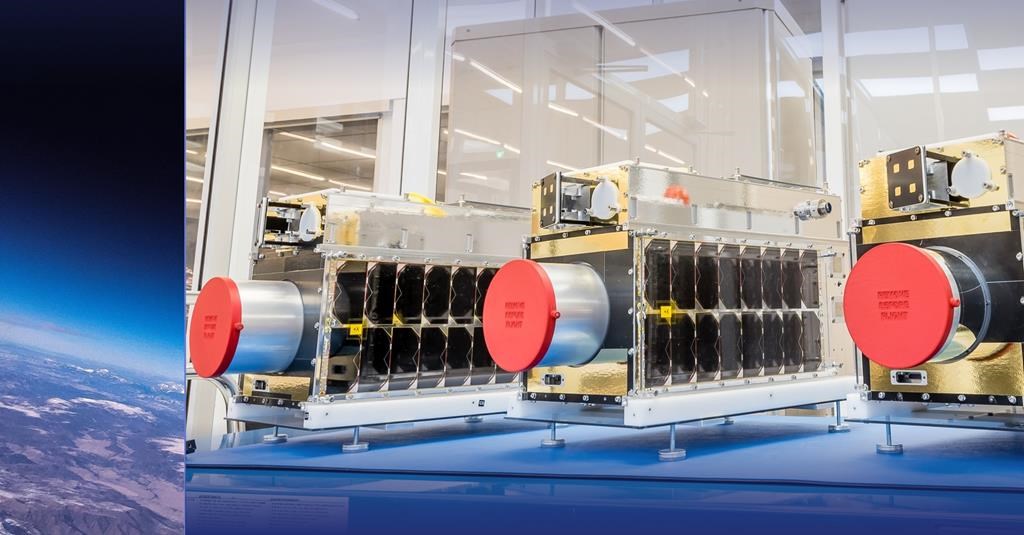MONTREAL — Montreal-based GHGSat, which detects methane emissions from Earthlings with rare accuracy, has a constellation of six satellites in space, thanks to the launch of three new satellites Wednesday from Florida.
At about 2:35 pm, the SpaceX Falcon 9 rocket, from the US company SpaceX, lifted off with three satellites on board as part of the Transporter-5 mission.
Stephan German, CEO of GHGSat, testified from the NASA site in Cape Canaveral, Florida.
“It was a great day, we are very happy to see the rocket depart without any problem,” Stefan Germann noted, a few minutes after the spacecraft took off, in a phone interview with The Canadian Press.
The Luca, Diaco and Benny satellites bear the first names of the children of the members of the company founded by Stefan Germann.
“They bear baby names so we will always remember why we do what we do,” the GHGSat founder said, stressing the “importance of fighting climate change.”
“We have several launches planned between now and the end of 2023, to bring our constellation to ten satellites,” added Stéphane Germain, CEO of GHGSat.
In Montreal, near the company’s headquarters on Saint-Laurent Boulevard, dozens of employees gathered to watch the launch live on giant screens.
“I am very excited, it is a huge step to have three more satellites,” said Marianne Girard, satellite imagery specialist at GHGSat, adding that by doubling the amount of equipment in orbit, the company will be able to “double its capacity, rather than seeing a place in the world.” Once every six days, you can see him once every three days.”
With pride in his eyes and a smile on his face, Eric Edwards, chief technology officer of GHGSat, told the Canadian Press that the three new satellites have a much stronger detection capability than other satellites the company has sent into space since 2016.
“We also need more satellites because we have more and more customers,” Eric Edwards said.
GHGSat data is used by businesses, governments, and regulatory agencies.
Quebec SME is proud to be the world’s only satellite system capable of detecting greenhouse gases with high accuracy, such as those coming from oil sites or landfills. This information is essential for developing policies to combat and adapt to climate change.
List and calculate greenhouse gases
Listing and calculating all sources of greenhouse gas emissions is a major challenge.
Countries and large companies must equip themselves with accurate measuring instruments to fulfill their commitments to reduce greenhouse gases GHGSat is focused on measuring methane, one of the potent greenhouse gases.
kick out cheaters
GHGSat satellites can also be used to “catch fraudsters” and ensure that countries and companies are honest and transparent about how much methane they emit.
A few weeks ago, the International Energy Agency said many countries were significantly underreporting their methane emissions.
A gas much stronger than carbon dioxide
Last November at the Glasgow Climate Conference, about 100 countries pledged to drastically reduce methane emissions. Also during COP26, the federal government announced $20 million in aid for businesses on Saint-Laurent Boulevard.
GHGSat provides its data exclusively to the International Methane Emissions Observatory (IMEO), an organization that reports to the United Nations.
A recent report from this organization indicates that methane released directly into the atmosphere is about 80 times more powerful than carbon dioxide (CO2) over a period of 20 years.
In fact, a study released Monday by the Washington-based Institute for Governance and Sustainable Development (IGSD) found that carbon dioxide reductions alone won’t prevent temperatures from rising more than 1.5 degrees Celsius compared to pre-industrial temperatures, as called for by the Paris climate agreement. .
IGSD researchers stress the importance of methane remediation to avoid climate catastrophe.

“Subtly charming problem solver. Extreme tv enthusiast. Web scholar. Evil beer expert. Music nerd. Food junkie.”

